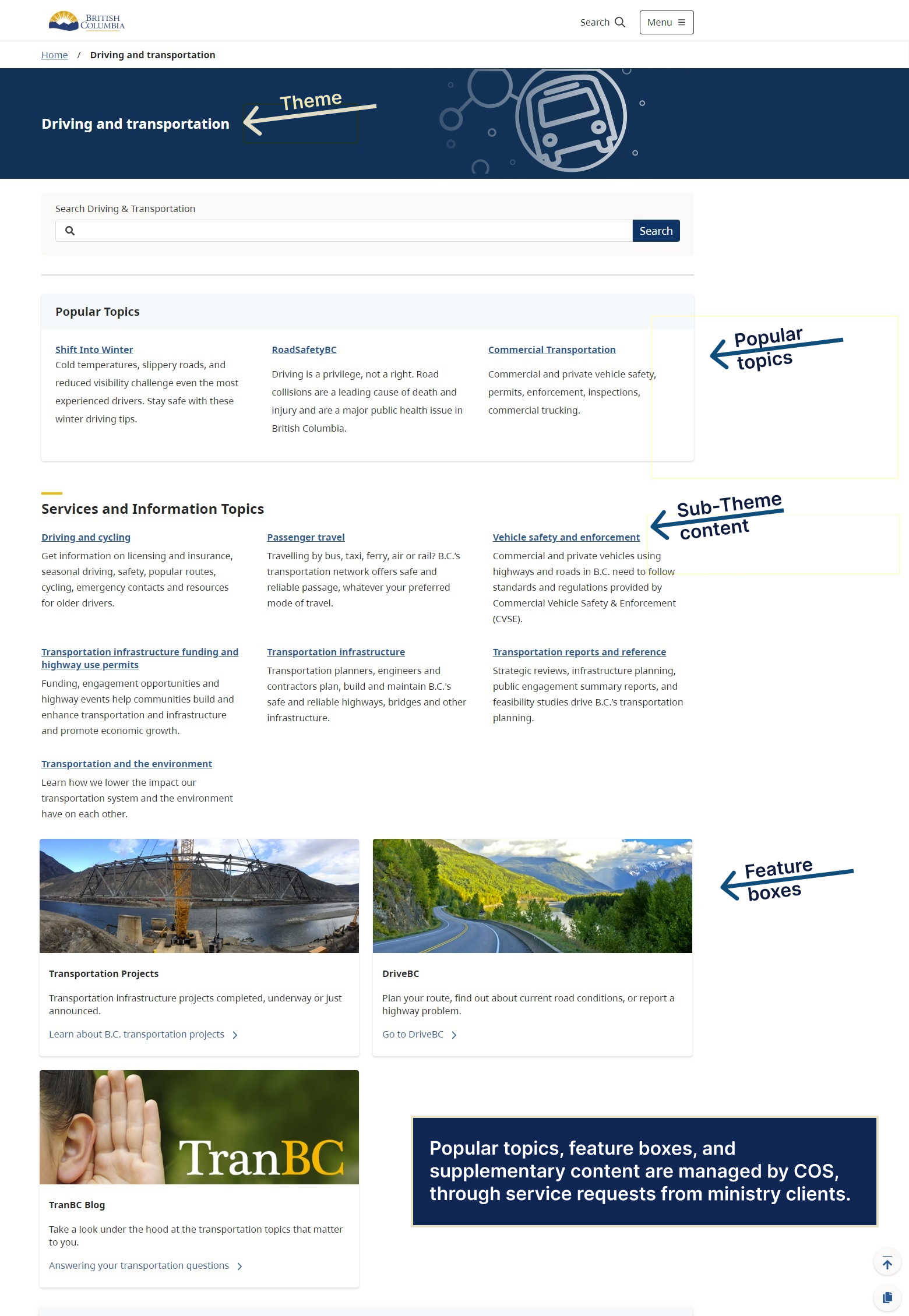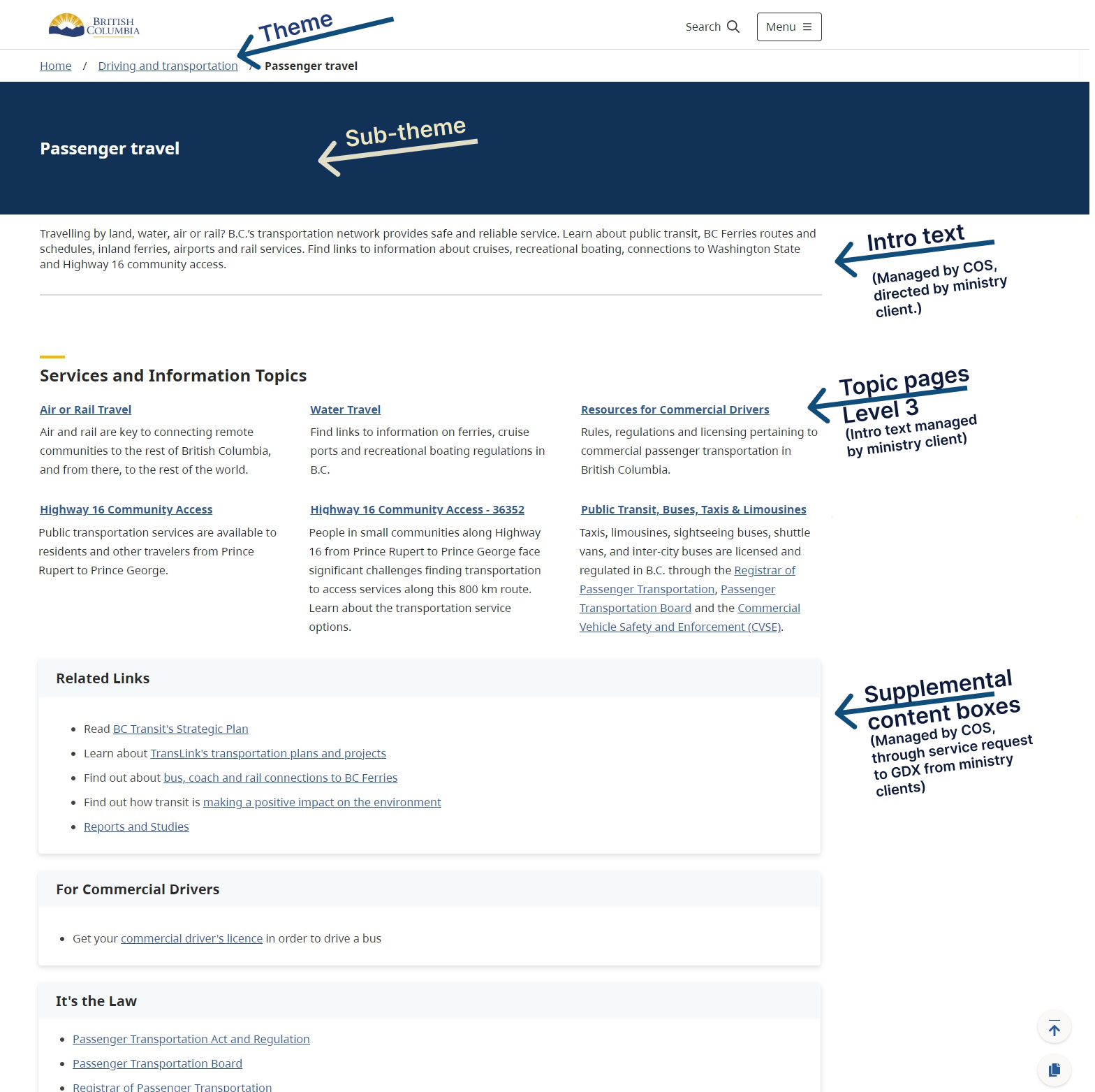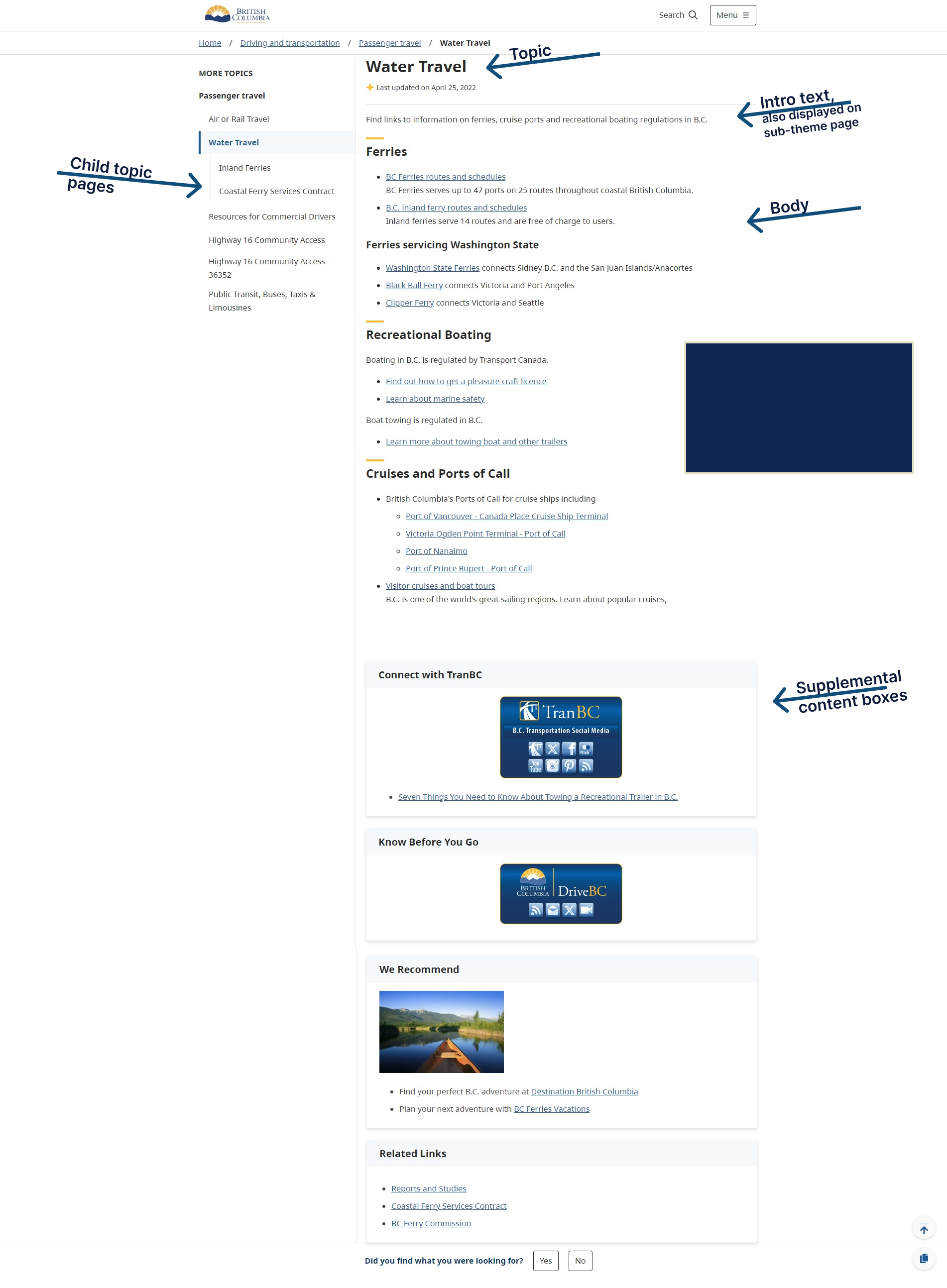Understanding the government site structure
Understanding how related web pages link together helps content editors start creating their webpages.
On this page
Site themes, sub-themes, and topics
Web content is developed in the CMS Lite production application, which provides clients the ability to view their pages on a secure Quality Assurance (QA) web server before publishing to the public (Production) web server.
It's important for content editors to be aware of the government website's structure, also known as the Information Architecture (IA). The B.C. government's website IA is split into:
Themes
Services and information on the B.C. government site is divided into 16 main areas, called themes.
Because the government site is defined by themes and not ministries, content editors from several ministries may have access to specific topics within a security group so that they can contribute content. Conversely, content from a program area may span multiple themes and will require access to several security groups.
Sub-themes
Each theme can have up to eight smaller sections, known as sub-themes
Topics
Each sub-theme can include up to eight topics.
- Clients must submit a Service Request to GDX to obtain approval to make name changes to a Level 3 Topic.
- Once the IAAG has approved the request, the Title and Nav Title fields may be updated on the Settings tab of the page
Adding content to the government website
The following provides a high-level overview of the steps to add content to the government website:
- Who sets up the website structure?
Corporate Online Services (COS), through GDX, defines the IA and is responsible for all core content. They decides the main structure for Themes (Level 1) and Sub-themes (Level 2).
- Creating and approving topics
Topics reside within a Sub-theme. The topic landing page (Level 3) name is determined by the Information Architecture Advisory Group (IAAG) in conjunction with the client.- To change a topic name, you must submit a service request to get approved by the IAAG.
- To change a topic name, you must submit a service request to get approved by the IAAG.
- Getting ready to add content
When a client is ready to start entering content in CMS Lite, COS will set up your topics and attach a security group to the content. The security group determines who can access the content to make changes.
- Handling main themes
COS manages the main themes, but the content comes from ministry clients. This includes Popular Topics and Feature Boxes. Services and information topics are dynamically generated from the sub-theme pages.- To request a change to this content, submit a service request
- To request a change to this content, submit a service request
- Managing smaller sections (sub-themes)
COS handles the sub-themes, but the content comes from ministry clients. This includes introduction text and added boxes. Remaining content on the sub-theme page is automatically generated from the topic pages.- To request a change for this content, submit a service request
- To request a change for this content, submit a service request
- Your role in topic pages
The client creates and maintains all content for the Topic landing page (Level 3) and all child pages. Content may be grouped into sub-topics (page groupings) by the content editors, and a level 3 topic page can have five lower-level pages underneath it (level 4 to 8).
- How topic pages influence others
The title and intro text of a Topic landing page (level 3), along with the titles of its level 4 child page titles, are used to automatically generate information below the Introduction on Sub-theme pages.
Page level examples
Theme (Level 1)
- Driving and transportation
Click to view larger images
Sub-themes (level 2):
- Driving and cycling
- Passenger travel (sample)
- Vehicle safety and enforcement
- Transportation infrastructure funding and highway use permits
- Transportation infrastructure
- Transportation reports and reference
- Transportation and the environment
Topics (level 3 - topic landing pages)
- Air or rail travel
- Water travel (sample)
- Resources for commercial drivers
- Highway 16 community access
- Public transit, buses, taxis and limousines
Sub-pages generate the Left Navigation. If no sub-topics exist, or nodes are hidden, there will be no left navigation.



